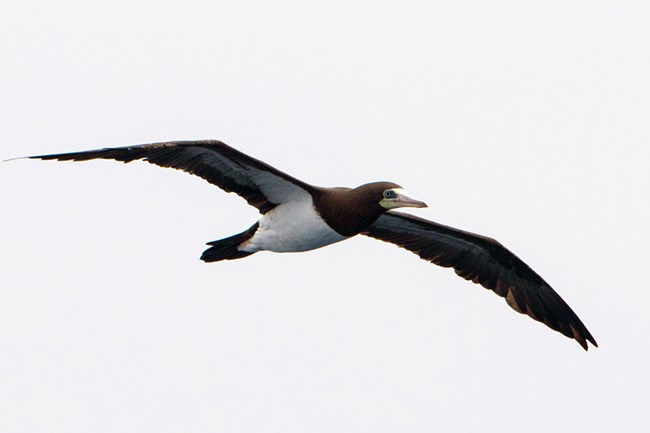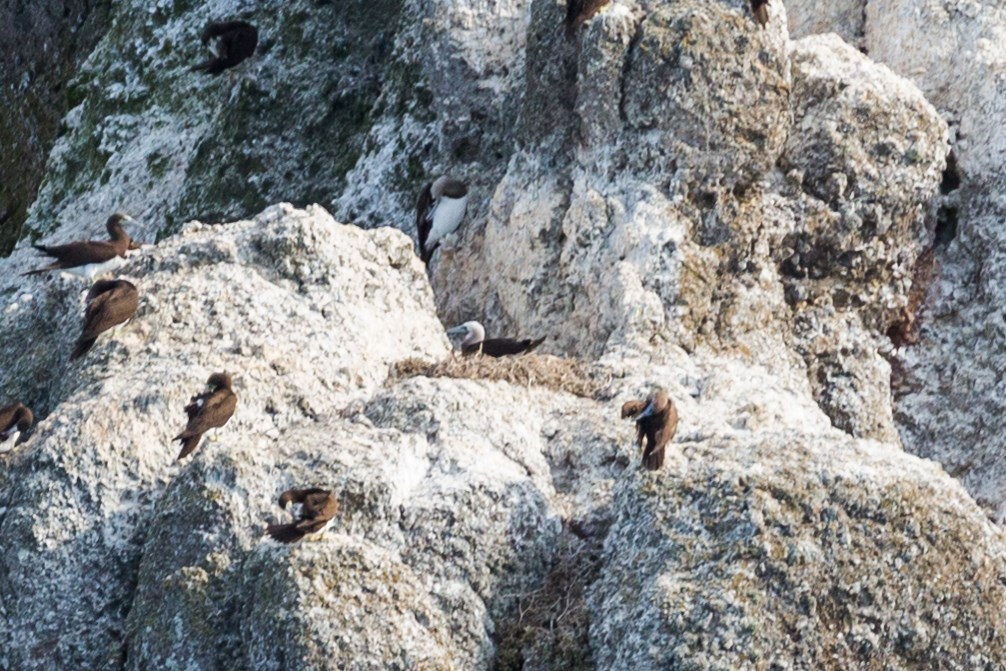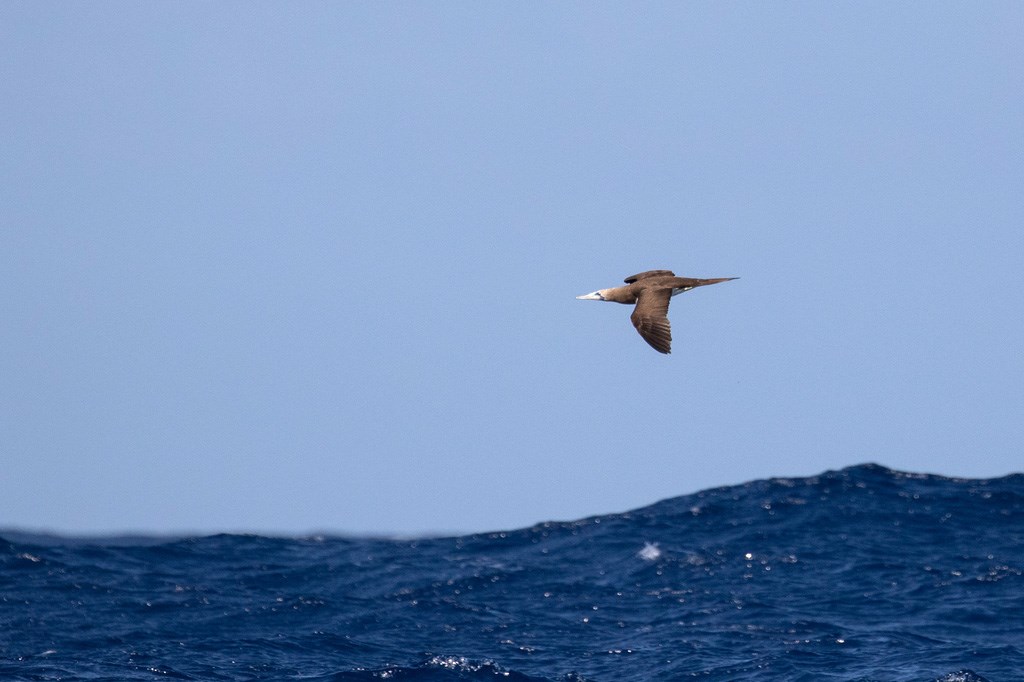Last updated: August 15, 2018
Article
Biologists Document Seabird’s Journey from Rare Visitor to Breeding Resident

© BJ Stacey / 2015 / iNaturalist.org / CC BY-NC
May 2018 - In 2014, Channel Islands National Park biologists began to notice a new and impressive seabird roosting on East Anacapa Island, and on Sutil Island, off of Santa Barbara Island. They recognized the birds as brown boobies (Sula leucogaster), which had been occasionally seen passing through over the years. That fall, the boobies began congregating in colonies of 100-200 birds. Since then, the colonies have dispersed at times in search of food, but they have continued to return in similar numbers. This past fall, David Mazurkiewicz and his fellow seabird biologists counted 102 birds on Sutil Island, and in an exciting new development, they discovered four active brown booby nests!

© Andrew Yamagiwa
These first nests, attended by pairs of birds displaying characteristic mating behavior and appearing to tend to eggs or small young, represent a significant northward expansion of the brown boobies’ breeding range. The species is generally considered tropical or subtropical, but it has not been staying put in recent decades. Brown boobies started moving north from the Gulf of California and the Pacific Coast of Mexico in the 1990s. They began settling on Baja California’s Coronado Islands, just south of the US border, where they eventually began breeding in the early 2000s. Both range expansions coincide with the warmer waters and changing prey availability associated with El Niño events.
What became of the nests is a mystery. Sutil Island is one of the more remote, hard-to reach locations in the park, so David and his team could not keep a consistent eye on them. When the team conducted a follow-up survey in February, they counted 20 brown booby adults, but could not find any of the young birds that would have been there if the nests had succeeded.
It is not uncommon for new breeding colonies to have a rocky start, and there are several possible reasons the nests might have failed. For example, the parents may have been younger birds trying to breed for the first time and failing from lack of experience. Changing prey conditions can also lead brown booby parents to give up on their nests.
As with virtually all seabird species, prey availability dictates much about brown boobies’ lives. If prey is plentiful near their colony, they may start breeding, no matter the time of year. If it is not, they will disperse, heading far out to sea in pursuit of their meals. Brown boobies hunt squid and small fish, often in dramatic, plunge-diving fashion.

© Ken Chamberlain / 2015 / iNaturalist.org / CC BY-NC
“Often surrounded by fish” may be one draw for the brown boobies that have taken up residence in Channel Islands National Park, but that is far from the park’s only seabird selling point. The park protects essential nesting real estate: away from the mainland, primarily undisturbed, and safe from most predators. In fact, a whopping 99% of seabirds in southern California rely upon the nesting and feeding grounds that the Channel Islands provide. Including brown boobies, a total of 14 seabird species have used the islands for nesting in recent years.
Channel Islands National Park, the Mediterranean Coast Inventory & Monitoring (I&M) Network, and their partners have been studying seabirds in the park for over 30 years. This work helps the National Park Service make informed decisions about better protecting and restoring seabird habitat. Still, due to the logistical challenges of seabird monitoring, only six species have been followed since the Park initiated it’s I&M program.
Needless to say, brown boobies are not among the six focal species, and the brown booby counts by David and his team have been primarily opportunistic. The seabird team plans to continue gathering observations on this recent arrival as time and resources allow. They are also working on a revision of the monitoring plan to cover more species and more forms of observation. Even after 30 years, there remains much to learn about seabird population trends, harder to observe species, and the broader dynamics of the breeding seabird community as a whole.
Prepared by the Mediterranean Coast Inventory and Monitoring Network.
